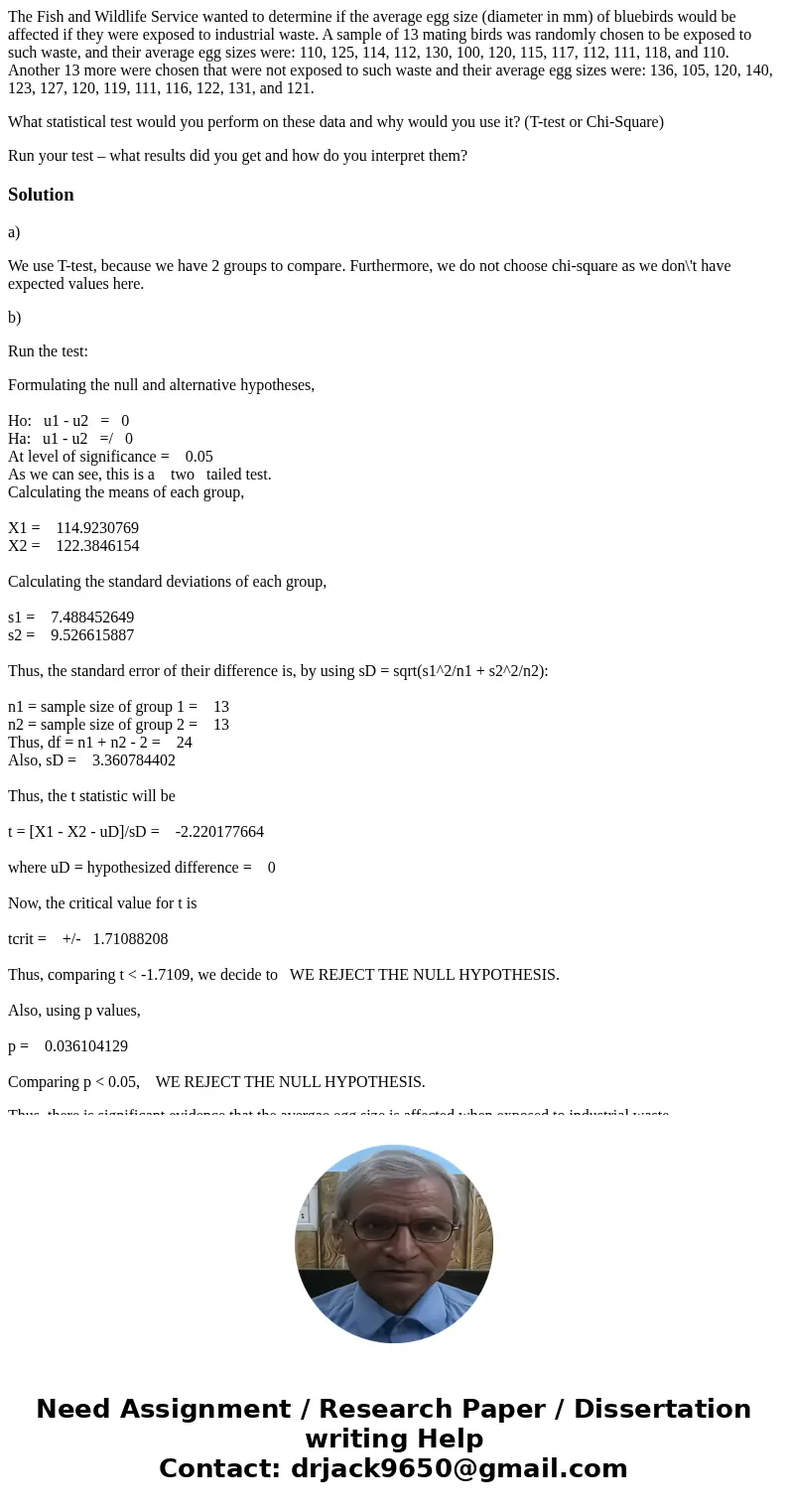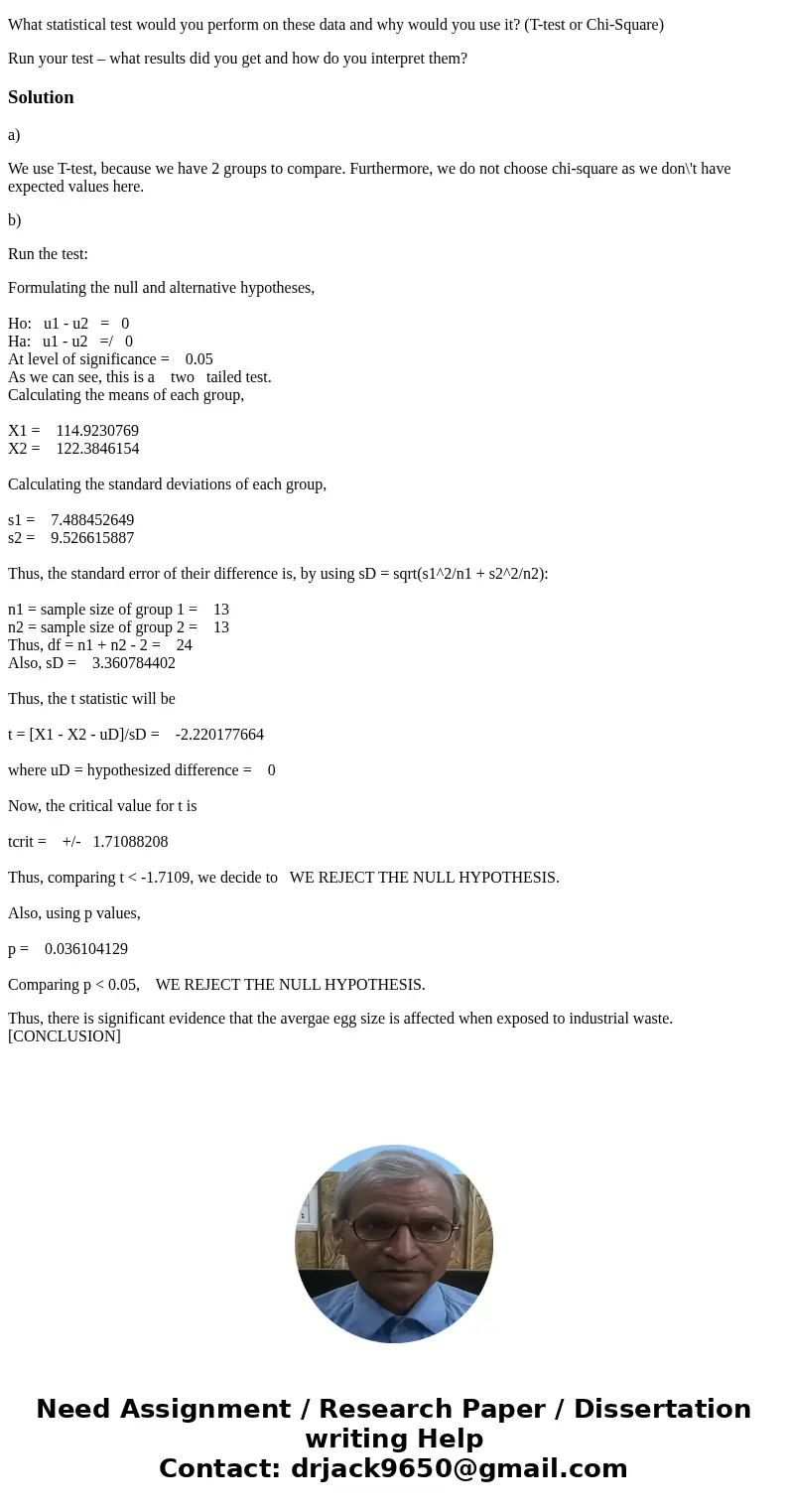The Fish and Wildlife Service wanted to determine if the ave
The Fish and Wildlife Service wanted to determine if the average egg size (diameter in mm) of bluebirds would be affected if they were exposed to industrial waste. A sample of 13 mating birds was randomly chosen to be exposed to such waste, and their average egg sizes were: 110, 125, 114, 112, 130, 100, 120, 115, 117, 112, 111, 118, and 110. Another 13 more were chosen that were not exposed to such waste and their average egg sizes were: 136, 105, 120, 140, 123, 127, 120, 119, 111, 116, 122, 131, and 121.
What statistical test would you perform on these data and why would you use it? (T-test or Chi-Square)
Run your test – what results did you get and how do you interpret them?
Solution
a)
We use T-test, because we have 2 groups to compare. Furthermore, we do not choose chi-square as we don\'t have expected values here.
b)
Run the test:
Formulating the null and alternative hypotheses,
Ho: u1 - u2 = 0
Ha: u1 - u2 =/ 0
At level of significance = 0.05
As we can see, this is a two tailed test.
Calculating the means of each group,
X1 = 114.9230769
X2 = 122.3846154
Calculating the standard deviations of each group,
s1 = 7.488452649
s2 = 9.526615887
Thus, the standard error of their difference is, by using sD = sqrt(s1^2/n1 + s2^2/n2):
n1 = sample size of group 1 = 13
n2 = sample size of group 2 = 13
Thus, df = n1 + n2 - 2 = 24
Also, sD = 3.360784402
Thus, the t statistic will be
t = [X1 - X2 - uD]/sD = -2.220177664
where uD = hypothesized difference = 0
Now, the critical value for t is
tcrit = +/- 1.71088208
Thus, comparing t < -1.7109, we decide to WE REJECT THE NULL HYPOTHESIS.
Also, using p values,
p = 0.036104129
Comparing p < 0.05, WE REJECT THE NULL HYPOTHESIS.
Thus, there is significant evidence that the avergae egg size is affected when exposed to industrial waste. [CONCLUSION]


 Homework Sourse
Homework Sourse